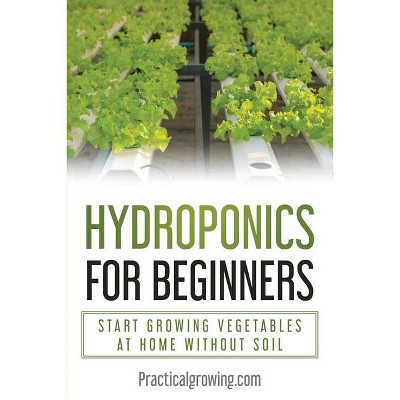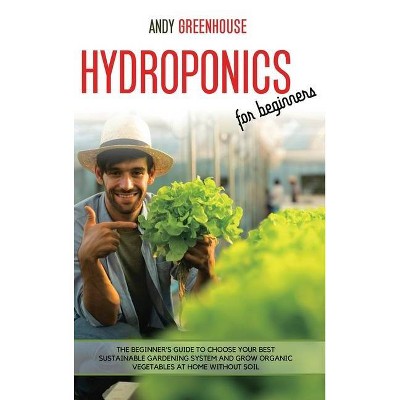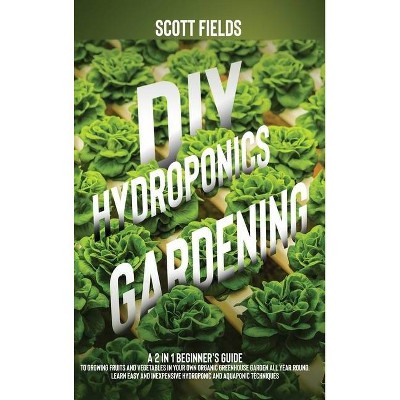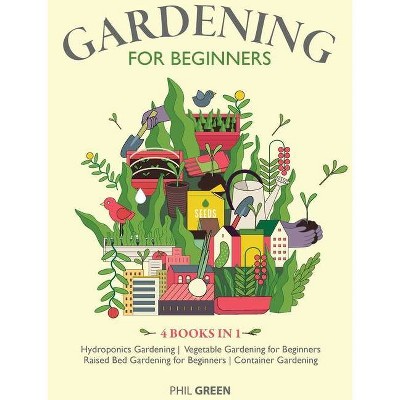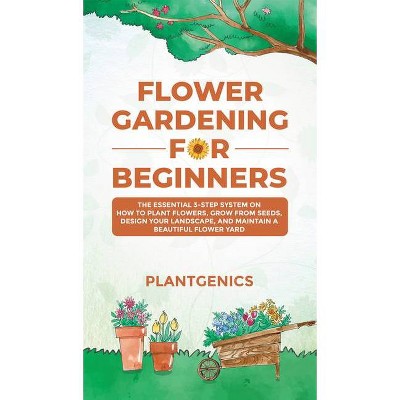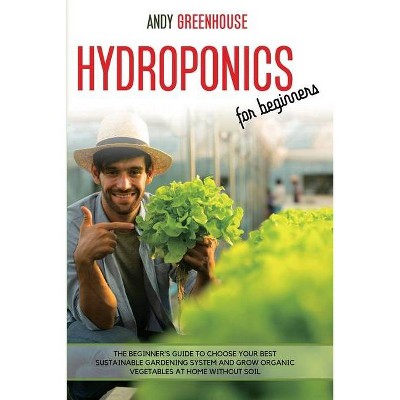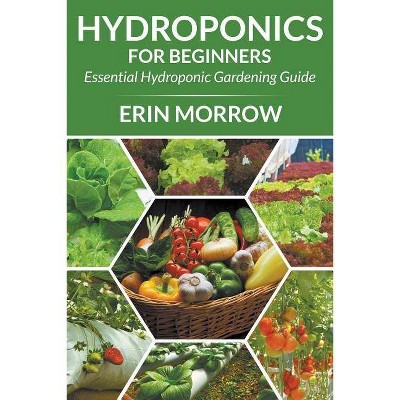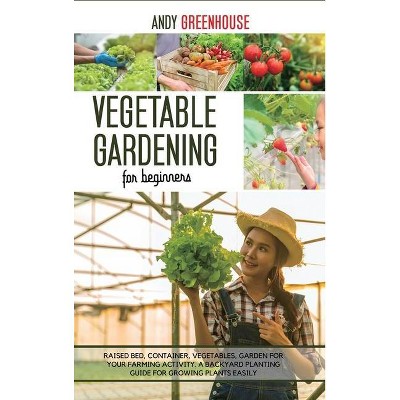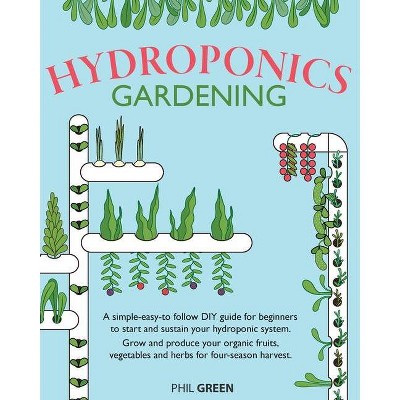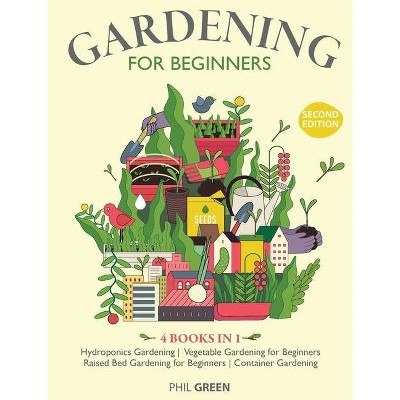Hydroponics For Beginners - (Gardening Bliss) by Richard Jones (Hardcover)
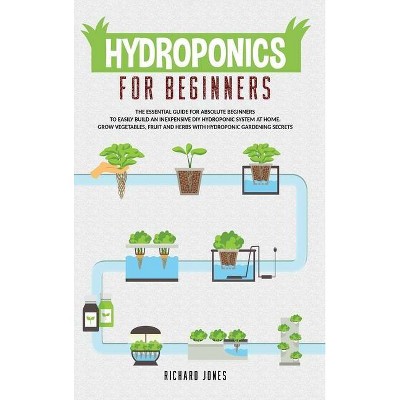
Similar Products
Products of same category from the store
AllProduct info
<p/><br></br><p><b> About the Book </b></p></br></br><p>The <strong>definitive step by step beginners guide</strong> to <strong>easily build an inexpensive DIY hydroponic growing system</strong>, and <strong>how to cultivate organic vegetables, fruit and herbs at home</strong> with hydroponics. </p><p/><br></br><p><b> Book Synopsis </b></p></br></br><strong>Do you want to learn how to</strong> <strong>easily build an inexpensive DIY hydroponic growing system, </strong> <strong>cultivate organic vegetables, fruit and herbs at home</strong> <strong>with hydroponics? </strong><p>If yes, then keep reading...</p><p><br></p><p><strong>Almost all plants can be grown using hydroponics. </strong></p><p>When crops are grown in this way, <strong>they use up 50% less land and 90% less water</strong> when contrasted with traditional crop growing methods. However, <strong>the yields from the crops are 4 times more</strong>, and <strong>the crop growth rate is twice as fast</strong> when using hydroponics. This is possible because the crops have everything they would need, at the right concentrations. </p><p><br></p><p>In place of the soil used in typical agriculture, the farmer or gardener roots the plants in compounds like vermiculite, clay pellets or rock wool. All substances used must be inert so that they do not introduce any new elements into the plant's environment. The solution of water and nutrients is then poured over the support material so that the plant can feed into it. There is also less reliance on fertilizers, pesticides and other potentially harmful products used in conventional agriculture. </p><p><br></p><p><strong>This book covers, among others, the following topics: </strong></p><p><br></p><ul><li>Introduction to hydroponics</li><li><strong>Advantages and disadvantages of hydroponics</strong></li><li>Terminology used in hydroponics</li><li><strong>All the equipment you'll need</strong></li><li>Hydroponic growing systems detailed and explained</li><li><strong>Step by step guide to building you inexpensive hydroponic growing system</strong></li><li>How to select and start the best plants</li><li><strong>Plant nutrients and how to use them effectively</strong></li><li>Pest and disease control</li><li><strong>Common mistakes made and how to avoid them</strong></li></ul><p><br></p><p>...And much more!</p><p><br></p><p>In this book the various hydroponic systems are explained in detail. Many practical and money saving techniques are described, too. You will learn how to set up your own system, what type of lighting to use, what plants work best in hydroponic gardens, and how to troubleshoot any problems that may arise. If you want to set up a simple one-bucket system, this is the book for you. If you want to set up a full-fledged garden greenhouse, then this is also the book for you.</p><p><br></p><strong>Ready to get started? Buy the book now! </strong><p/><br></br><p><b> Review Quotes </b></p></br></br><br><p><em>A great guide for beginners it covers you from prep to fruition. My son really wanted to try this out and after reading the guide I feel more confident we can pull this off.</em></p><p><br></p><p><em>This book is great if you're looking into getting started with hydroponic gardening. It's got an introduction as well as the advantages and disadvantages and even gives help with the common terminology. I like that in addition to explaining the different growth systems and equipment and materials, it also gives DIY instructions on how to start building your own system. It even tells you the best plants to grow hydroponically and how to control pests and diseases.</em></p><p><br></p><p><em>Fun Book with loads of info for starting out your own hydroponics setup at home. I'm so keen to try it out and this book helps give you the know-how for setting one up from cheap and basic to more complex and a little more costly. I started my sprouts and hope they take off and I can figure this thing out!</em></p><p><br></p><p><em>To those who are not familiar with hydroponics, this book is good for you. You will get a brief introduction, then you will learn the advantages and disadvantages of hydroponics. You can also familiarize yourself with the common terms used in hydroponics and be guided on how to select the best plants and tools so you could start doing it.</em></p><p><br></p><p><em>When you reach the pests, you get pictures! Recommend!</em></p><br>
Price History
Price Archive shows prices from various stores, lets you see history and find the cheapest. There is no actual sale on the website. For all support, inquiry and suggestion messagescommunication@pricearchive.us
